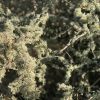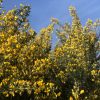We first met with Tyler Sharp two years ago, and were immediately struck by his passion and understanding of the rural way of life. His passion for the countryside was infectious, and moreover, his love for the Scottish Highlands was uplifting. We caught up with Tyler in Beauly for his made-to-measure tweed suit fitting, and over a coffee discussed his all encompassing countryside raison d’etre.
Tell us a little about yourself?
I grew up in Texas, with the early years being in Austin and middle and high school in Grapevine, which is in the middle of Dallas and Fort Worth. I spent much time in the woods, creeks and lakes, chasing reptiles and shooting a bow and arrow. I was obsessed with Robin Hood when I was younger, which explains my love of traditional archery now. I played many sports, but lacrosse and football (real football, not American football) were my favorites, and I still play. I went to the University of Southern California to study film, photography and creative writing. It was quite the cultural change to go from a suburban environment to downtown Los Angeles in 2002, but that experience was instrumental in broadening my perspective and taste for travel. After graduating college, I landed a job in Tanzania, filming for a safari company. I sold most of my belongings, moved back to Dallas, and flew to Tanzania to live in the bush and film hunts for five months. It was a life-changing experience that shaped my personality and career trajectory. I spent many years filming for different outfitters, TV shows on the Outdoor Channel, organizations and brands in over 35 countries. I launched a freelance career in photography, writing and directing off the back of the adventure travel portfolio I amassed.
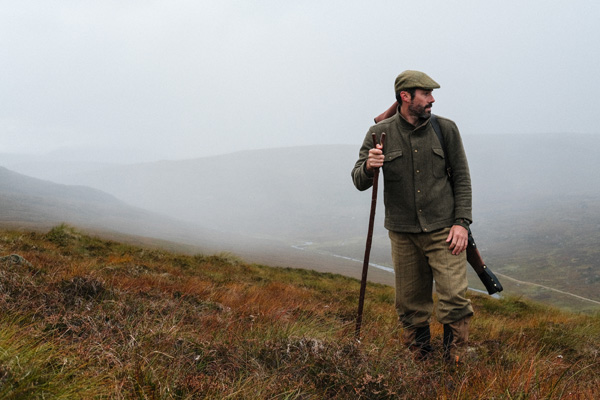
Where and when did your passion for hunting start?
Growing up in Texas, I was undoubtedly exposed to hunting, but it was not a significant part of my life. I distinctly remember going on my first pheasant hunt when I was maybe 10 or 11 years old, and I still have that taxidermied rooster in my house. I did start flyfishing at a pretty early age and spent a lot of time in Colorado, Wyoming and Montana in the summers. I would not have called myself a hunter before I ever went to Africa, and it even took me a while to understand what that word meant to me. Even though I had a camera in my hand on those safaris, I was still hunting. Those trackers in Tanzania I spent five months with were some of the most talented, almost mystical hunters I’ve ever been around. They taught me to track, to read blood signs and the stories left in the sand and the brush, to tell time by looking at the sun and to think with your instinct instead of your brain. All of this was in Swahili, of course, and it took me a while to apply that knowledge to domestic hunting situations. My hunting experience was pretty backward; I could track and hunt Cape buffalo and kudu but couldn’t have told you the first thing about hunting white-tailed deer or turkey. Through that journey and all of the places I visited while filming hunts, I realized that an ethical thread ran through every culture, people and hunting tradition that I was exposed to. It was a fascinating realization that I have been exploring and trying to articulate for many years now.
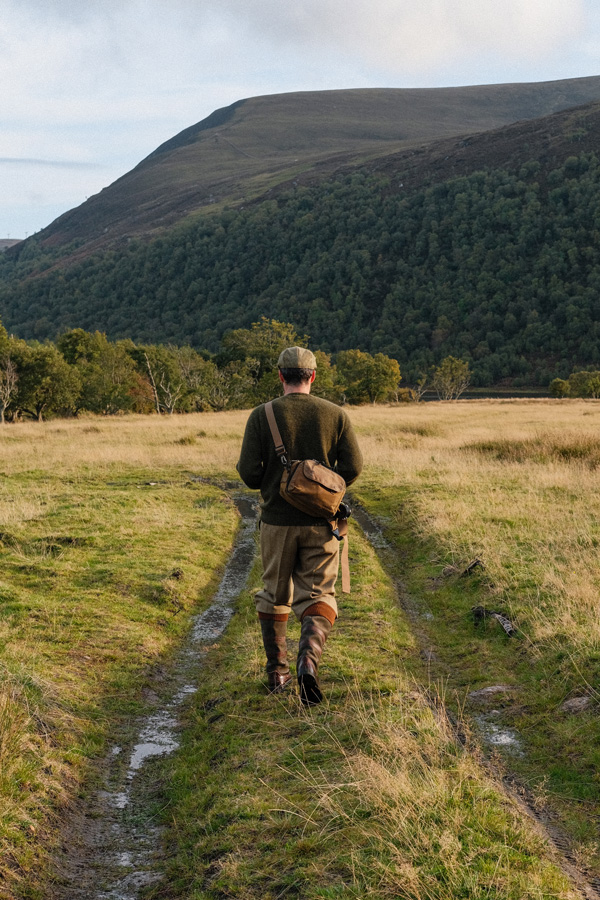
Tell us about the decision to start your own publication and the philosophy behind MH.
While several factors contributed to the creation of Modern Huntsman, it breaks down into two central tenets. The first was what happened when some of my friends and colleagues in Los Angeles found out that I was going to Africa to film hunting; many of them turned on me, got violently angry, called me names and, in some cases, decided not to be my friend anymore. I had not even been yet, so I didn’t know how to respond, how to justify or even talk intelligently about the situation over there. I underestimated people who had powerful emotional attachments to animals that, for the most part, they had never even seen and not lived close to. The concept that many non-hunters had opinions based not on fact but instead on things they had read in sensationalized news or social media posts was quite common. On the other side, many of the hunters and hunting-based organizations that I worked with were terrible at communicating with people who did not hunt, particularly about the role it plays in conservation. Ultimately, this was the impetus for pursuing a media platform and forum: to create a space to have more constructive conversations, to showcase the wide range of cultural and ethical tradition that permeates hunting culture globally, and to highlight a more diverse and thoughtful array of hunters, anglers, artists and thinkers than the mainstream hunting industry focuses on. As it turns out, it was a missing voice in the market. The Modern Huntsman brand has since shaped into something that has attracted spectacularly talented photographers, writers and filmmakers into the fold. With the support of subscribers, readers and many brand partners, we’ve just finished our eleventh volume, we’re working on our first wild game cookbook, and have expanded into experiential trips, educational workshops and creative retreats.
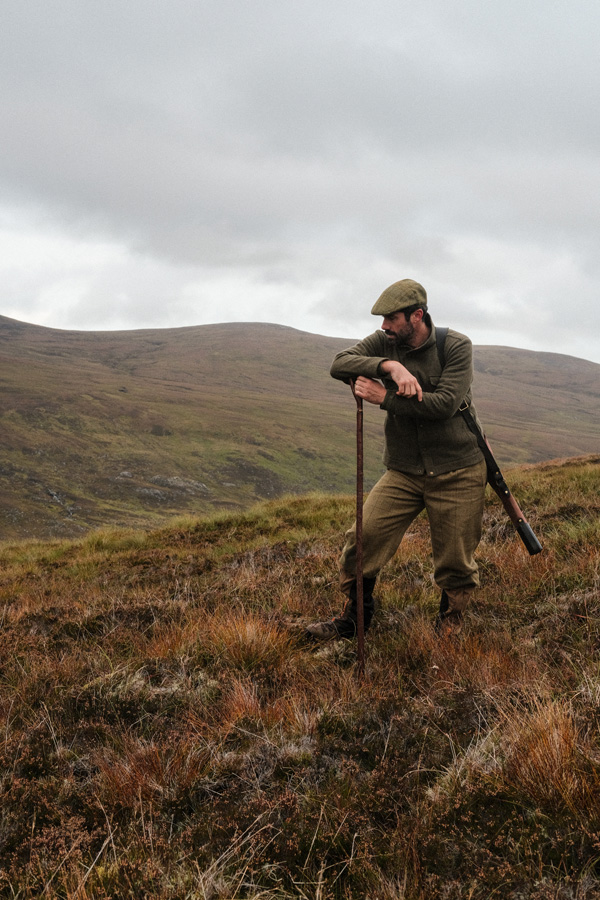
What drew you to Scotland? You’re now bringing guests here annually, so what was the catalyst? First impressions?
I have Scottish heritage on my father’s side. Like many Americans, my initial interest was generated by Braveheart, one of the first bloody movies I could watch as a kid. It also feels like everyone has an uncle who wears a kilt a few times a year, so the exposure to Scottish stories was at least on the fringe. Ultimately, it was my good friend and close collaborator, Byron Pace, who convinced me to visit him and learn the ways of the Highlands. He called me up within the first day or two of us launching Modern Huntsman on Kickstarter, and the first podcast I was ever on was his Into the Wilderness show, which continues to grow to this day. I accepted the invitation and spent a week with him visiting estates to learn about grouse and deer management, see his version of the Scottish Highlands, and, of course, oblige his unsuccessful efforts to convince me that Land Rovers are superior to Land Cruisers. Like many, I became enamored with the traditions, the stories and the wild spirit of Scotland, all of which I’ve written about many times in the pages of Modern Huntsman. To me, a mysticism abounds in the fog, lochs and peaks of the hills, especially as the roar of a stag echoes among them. I’ve since been there many times. After each story I’ve written or published photographs from, people always always ask, “When can we come with you?” After so many requests, we figured we might as well oblige, so we just hosted our inaugural Scottish Highlands trip through Modern Huntsman with 18 guests. It was an incredible week at an estate with stag stalking, fly fishing for salmon and trout, wing shooting, Scotch pairings and a chef cooking wild game all week. It went so well that we’re hosting two weeks next year, and we hope to continue to be ambassadors for the culture and traditions of the Highlands and introduce new folks to that essential lifestyle.
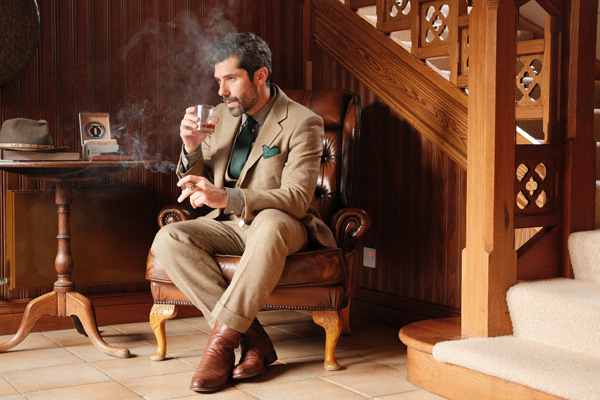
How did you first hear about Campbell’s? Do you feel where you’re from, there’s an appreciation for business like ours with rich history and heritage?
Again, I have Byron to thank for learning about Campbell’s, as I believe he did some filming at your shop years ago. I have always been obsessed with tweeds, traditional hunting jackets and just classy menswear. Living in Texas, however, there are only a few months out of the year that you can wear them, so I had to curb my appetite in many cases. When I visited last year, Byron suggested that we make a detour to visit the shop, and, of course, we wanted to feature you and the shop in Volume Ten of our publication. We always try to weave artists and makers into each book as extensions of hunting stories, so it was a perfect fit. It had also been a life dream of mine to have a three-piece suit made in tweed, which you helped bring to life. The suit turned out perfectly, and it is the pride of my closet. Now, I’m just hoping for the weather to stay cool here in Dallas so that I can wear it on more occasions. Apart from the quality, I love that it has a complex story to go with it: the story of the tweed itself, picking the perfect style, the story of your shop and your mission. There is quite a large population of hunters and especially wing shooters in Texas, so it often becomes a conversation piece, and many of them are familiar with Campbell’s. Given that this state is a bit obsessed with its history, it makes sense that many from here also show an affinity for the history and heritage of other places. My fiance Caris jokes that I need to have little cards printed with the story on it so that we don’t have to spend so much time talking to strangers, but I don’t mind telling people about a great thing!
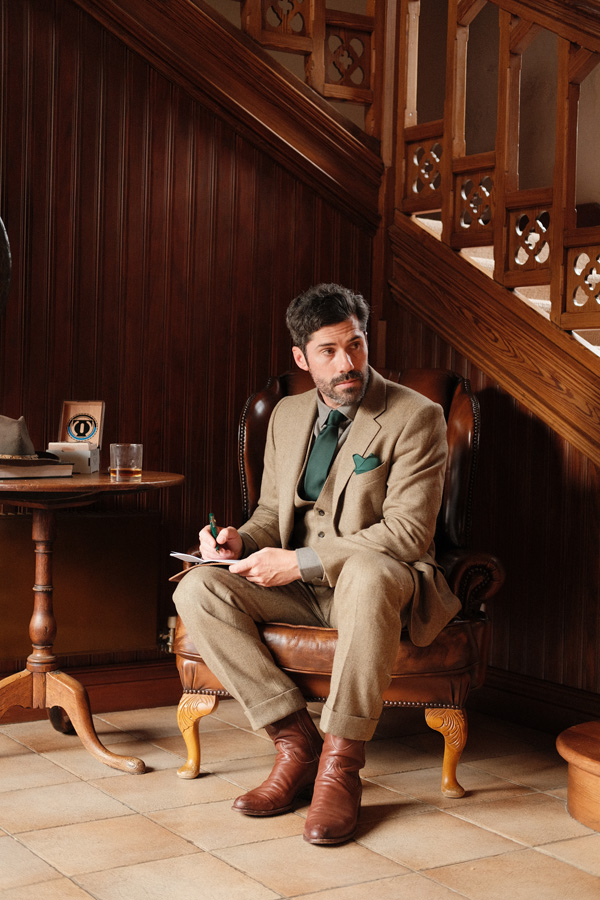
Having now been on the hill in the Highlands, do you admire the traditions that the stalkers maintain, such as the tweed and the ponies?
I could not admire it more and honestly wish this sort of thing existed more in the modern world. While there are historical re-enactments and period-appropriate costumes here and there, it’s pretty amazing that the culture and traditions of the Highlands are kept alive on these estates. Not everyone is fascinated with the old ways as much as I am, but I’d find it hard to believe that someone would not come away from a week on the hill with admiration and respect for the culture there. There is something special about feeling like you’re stepping back in time and experiencing some magic in a modern world that often feels like it’s trying to suppress those types of things. As we continue to bring guests to the Scottish Highlands and Campbell’s, we certainly hope that more of them go home with the same sense of wonder I still feel every time I step foot on the hill.
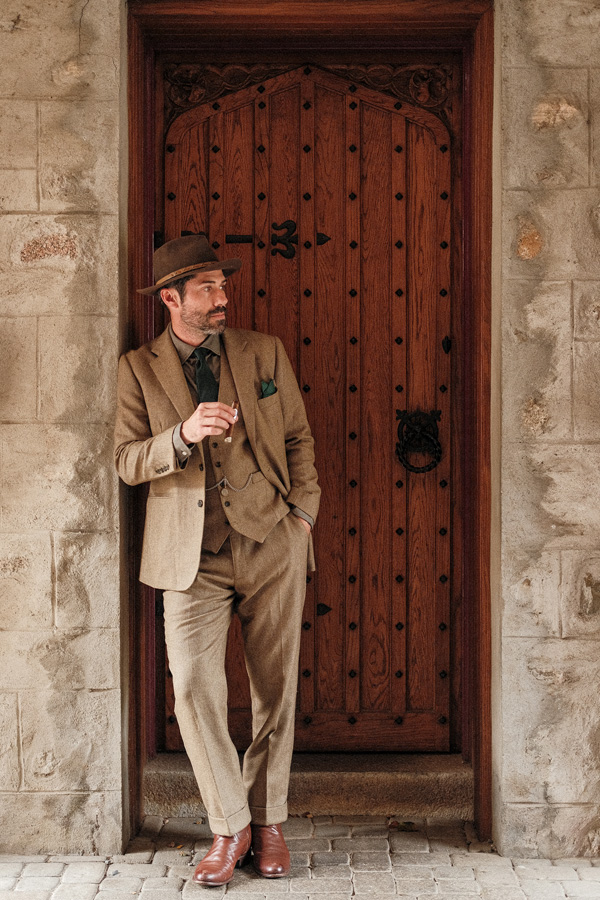
You’ve traveled to some fantastic places, judging by the magazine! Which has been at the top of your list?
Yes, I have certainly been fortunate enough to explore many countries, many of which were in some incredibly remote regions of the planet with little human influence. Tanzania holds a unique place in my heart, and it is my favorite country to visit. So much has changed since 2006 as human populations and development progress, but some wild places remain there. However, one of the most unique places I visited was Pakistan. I spent nearly five weeks there in 2009 while we were filming a TV show, and it was an unforgettable experience. We spent most of our time in rural villages, and the people were so incredibly kind and hospitable, and the food was some of the best I’ve ever had. I also got to visit a handful of museums in Lahore, saw a traditional Sufi mystic performance and got to see the energetic but tense military flag-lowering ceremony on the border of Pakistan and India. That is a pretty storied rivalry. To witness that play out in a ritualized ceremony with grandstands full of screaming spectators on both sides of the border was unforgettable. I hope that I get a chance to visit again someday, as I still cherish that experience and some of the photographs I came home with from that trip more than most.
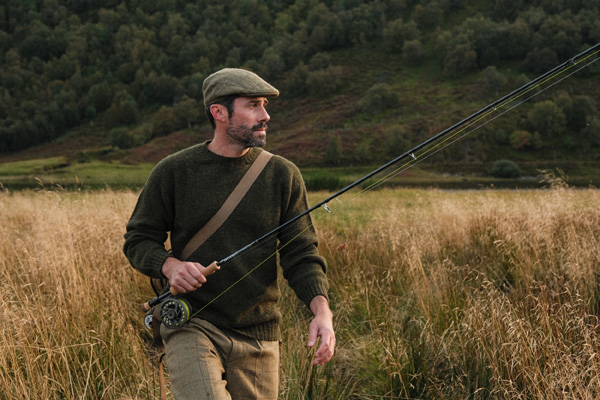
You recently got engaged. Congratulations! We can only assume somewhere in the wilderness in some faraway country, doing what you love?
Yes, I did recently get engaged, thank you! It was this past July in Tanzania to my lovely partner Caris, who is an incredibly talented artist and designer (you’ll see her artwork in the past three volumes of Modern Huntsman). When I visited Tanzania for the first time in 2006, I told myself that whenever I got engaged, I would do it there. I conspired with my dear friend Lupo Santasilia – who is a cultured, multi-lingual man of the world who lives there – to source a unique Tsavorite for the ring, which is a beautiful green garnet native to Tanzania and Kenya. I started this scheme about six months before, but did (what I’d like to think) was award-winning acting to throw her off the trail because I wanted it to be a surprise. I told her it wasn’t a good time financially and that it would likely be later in the year, “towards our Scotland trip in October,” so that was her expectation. My friends Roger and Daisy Hurt, who run a safari operation in northern Tanzania, helped me plan the perfect surprise. Under the guise of a marketing photo shoot, we set up a beautiful bar and chairs by a fire in a dry river bed just outside of camp. Then, as the sun set in Maasailand, I pulled the ring out and took her by complete surprise. She uttered expletives before she said yes, but then we broke out the champagne, had a party in camp, and then enjoyed a week of hunting and shooting in the bush of Tanzania. Afterward, we visited some good friends in Nairobi before going to the Kenyan coast to enjoy the tiny Swahili beach village of Lamu! It was the perfect trip, and we’ll never forget those two magical weeks in East Africa.
To finish off. Last supper while watching your favourite film?
This question is tricky because, ultimately, my inner geek will have to show itself on the film side. I’m a massive Star Wars and Lord of the Rings fan, but if I have to choose one, I think it would have to be The Return of the King, with a mezcal negroni for an aperitif. For the meal, I am forever attempting to blend the simple, fresh style of Japanese food with the humble and homey roots of growing up on Mexican food. Think fresh fish or sashimi with more of a Mexican salsa-style take on the sauces folded into tacos, with some slow-cooked carnitas or barbacoa that is topped with thinly sliced hot peppers and Togarashi spices on top of udon noodles, or even in a cilantro rice bowl. I’d have Shishito peppers on the side with guacamole, a roasted salsa trio, and a spicy margarita followed by Kirin Ichiban in a frozen glass.

